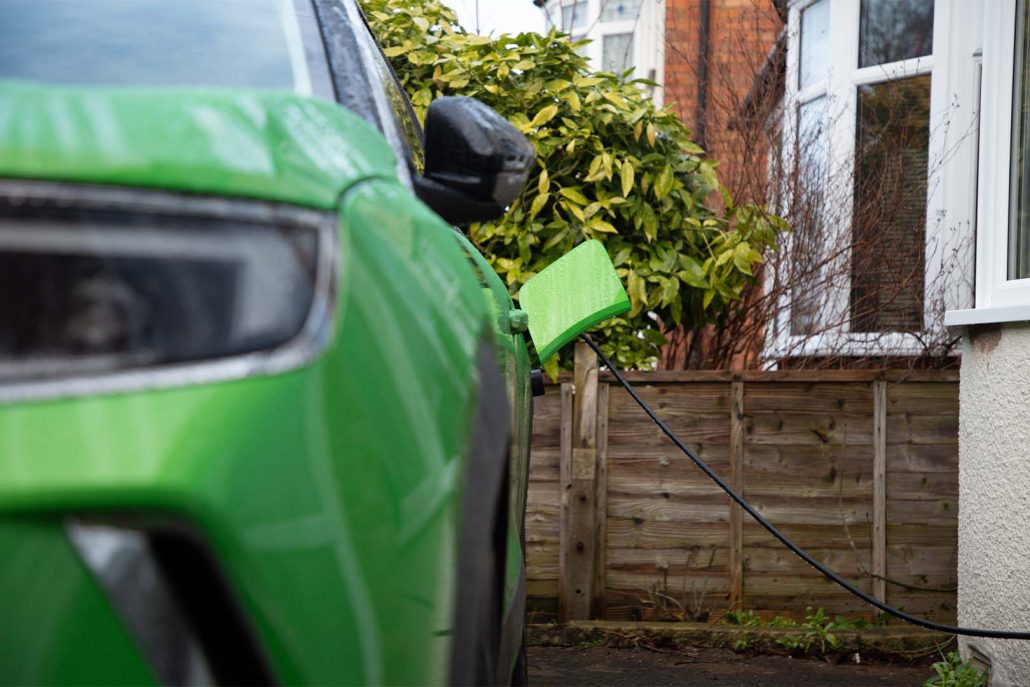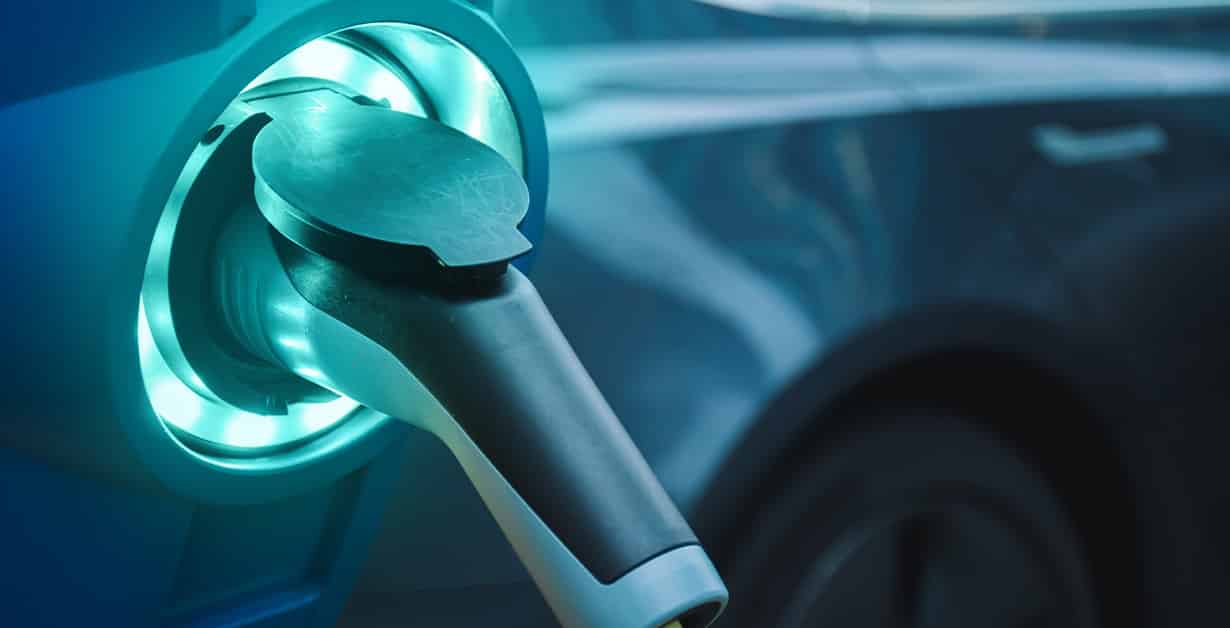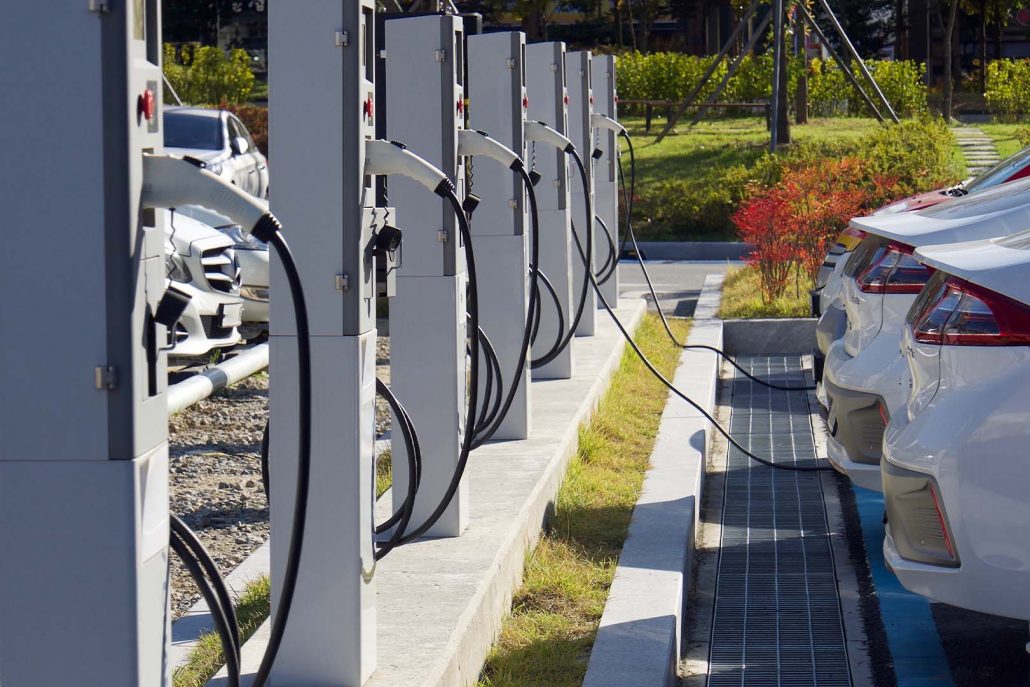Whether at home or on the road, there are a few things to keep in mind when charging your e-car. We offer tips and tricks that you should have in mind to avoid mistakes. What should you keep in mind when charging all-electric vehicles? Both for at home and on the road, we have compiled the most important do's and don'ts for you. A perfect overview for e-car newbies, but also a good test for experts.
Table of contents
Charging an e-car at home - what do I have to consider?
What should they consider when charging pure electric vehicles if you want to do it at home? The infrastructure is the be-all and end-all. It is important to be clear about the scope of the project. In any case, you should seek advice from a local energy provider. This is often without obligation and will definitely help you with sound expert knowledge. In addition to advice, there is often also a comprehensive installation service, which, should you decide to go for it, can do the work for you for your own wallbox. It is important to consider in advance whether you would like to take advantage of a special tariff for e-cars, in which the charging device is registered with the network operator as a controllable consumer and the charging current is measured via a separate electricity meter. How useful such a tariff is depends mainly on your own driving profile. Frequent drivers and people who also use the car commercially are the main beneficiaries. You should also make sure that the car electricity tariff is also a green electricity tariff. Often, the advice of local energy suppliers is important here as well, but no matter what you decide, it pays to stay up to date with the development of the tariffs. That way, you can keep an eye on price changes and, in the best case, save money.
You should definitely avoid charging your car via a normal household socket. Although this is possible in an emergency with the help of a mobile charger, it also has some disadvantages. Firstly, the charging process takes much longer due to the lower power compared to a stationary charging solution, and secondly, there is a risk that the socket and associated cable lines will overheat due to the continuous load. If you are not prepared to purchase your own charging infrastructure, you should inform yourself very carefully about the charging options available to you. It is perfectly possible to charge only in public and at the workplace, but weigh up your own usage profile to do so.
+ Do's
Take advice from the energy provider (Read more: Electric car: Electricity providers support you with wallbox and co.)
AND
Special tariffs for e-cars (Read more: Is an electricity tariff for an e-car worthwhile?)
- Dont's
Electric car charging via Schuko socket or even laying an extension cable from the Schuko/household socket into the garage (Read more: Electric car charging time: What you need to know!).

Use the charging infrastructure to your own advantage on the road!
Even on the road, it often happens that you have to rely on a third-party charging option. You should keep track of the charging infrastructure in your own area, but also inform yourself about developments and trends throughout Germany. There are some helpful sites and maps for this, such as the charging station register of the Federal Network Agency. Even longer journeys with charging stops are no longer a problem. Nevertheless, you should not simply hope to find a suitable charging station in no man's land. For e-car charging, it is advisable to do some basic planning of the route and potentially useful charging stops. Fortunately, this does not have to be done by hand. There is an app for everything or maps such as ChargeMap, GoingElectric or the ADAC route planner, which show possible charging points as well as the route. The easiest way to plan is to use the vehicle's navigation system. This calculates the arrival time taking into account the charging stops along the route. As a driver, all you have to do is enter the destination in the navigation system and off you go.
Charging points
The horror for e-car owners is having to fill up very expensively at some charging station because no alternative is available in the vicinity and no suitable smartphone app or charging card is at hand. In the jungle of more and more providers streaming onto the market, it is therefore a good idea to always be up to date with the latest charging station access options. These sometimes differ greatly in the number of accessible charging points and the costs, which is why a thorough comparison and consideration of your own driving profiles is essential. Based on this, you should then select the most favourable access options for you (charging cards, apps, etc.), even if this may mean having to use several apps and cards.
And should a card not work, the legislator has provided at least one payment system at every public charging station in the charging station ordinance, which can be used spontaneously and without prior conclusion of a contract. So if you have a smartphone with you, you can always charge your e-car spontaneously in an emergency.
+ Do's
Keep an overview of the charging infrastructure in your own area and plan charging options for longer trips or use the navigation system in your car that also knows about charging stations (Read more: The Fast Charging Network in Germany & Sustainable Business Trips - Taking the E-car to Customer Appointments)
- Dont's
Driving off on the off-chance without finding out about the charging station network
Access options to the charging station
Despite all the enthusiasm, you should not forget to look into the specifications of the new vehicle. Especially the charging capabilities, plug types and cables of your e-car are important in order not to be negatively surprised on the road. Is your car fast-charging capable or not? For normal charging, the three-phase Type 2 plug (also Mennekes plug) has now established itself as the standard, while Asian manufacturers have still relied on Type 1 for older vehicles. There are adapters for Type 1 plugs that can be used for charging with Type 2 plugs. For fast charging, European and American manufacturers have agreed on the CCS plug (Combined Charging System), which is an extended version of the Type 2 plug with two additional contacts for fast charging. Asian manufacturers, on the other hand, often use the CHAdeMO plug. Tesla is somewhat out of line with its own Tesla Supercharger plug, which is a modified Type 2 plug. At least it is compatible with charging stations with a "normal" Type 2 plug.
But with all this variety, e-vehicle drivers need not worry: Both in the public AC area and at the wallbox at home can be charged in any case via a type 2 plug (if necessary with a type 1 adapter)! When charging an e-car, the vehicle's central locking system includes the charging cable, so you don't have to worry about cable or power theft during the charging process.
+ Do's
Choose the right access options to charging stations in your region and beyond based on your own driver profile (Read more: Charging card comparison: The best one for your e-car!).
- Dont's
Losing track of access options
Connector types/cables
We have already touched on a few ways to save costs, but we have not yet mentioned an important one for e-car charging: free charging options! Many companies, for example supermarket chains like Lidl, Rewe or Edeka, Swedish furniture stores or hotels like Westin Bellevue or Best Western/Marriot, offer free charging options that you should take advantage of. Not only do the companies set an example for the increasing demand and motivate the progressive expansion of the infrastructure, but you also save money. Quickly filling up for free after work while shopping sounds perfect. At your favourite restaurant, you can now get a charge for the car in addition to your meal, which makes a visit worthwhile twice over. It's these little things that make a big difference in the long run. Compared to the worst-case scenario in terms of costs, spontaneously standing in front of a charging station without the corresponding access option and being forced to pay very high prices, the discrepancy between the smart and the naïve driver becomes particularly clear.
+ Do's
Familiarise yourself with the specifications and charging capabilities of your own car (Read more: How to charge your electric car).
- Dont's
Fear for the cable or the charging current in case of absence during charging (is included and protected by the central locking system).
E-car charging: Save costs!
Finally, here are two tricks that will come in handy over time with your electric car. In addition to the fixed cable at your own charging infrastructure at home, it is important to always have a Type 2 and an emergency charging cable in your car. At the public charging points, you will usually only find cables for fast charging. Most normal charging points (up to 22 kW AC) are used with a Type 2 charging cable that you bring yourself. The emergency charging cable is only intended as an emergency solution to make it to the next proper charging station. You can think of both cables as the equivalent of the classic spare wheel. While relying on public fast-charging stations is very attractive at first glance if the infrastructure is available, you will thank yourself for being prepared for all other eventualities as well. Proper handling of the most valuable part of your e-car, the battery, will also pay off in the long run. It is recommended to avoid extreme charging levels and to stay between 20% and 80% if possible.
+ Do's
Keep track of free charging options in the vicinity (shopping feels especially good when the car is charged for free in the meantime).
- Dont's
Avoid situations in which you have to charge spontaneously without a charging card - that can be expensive!
Tips and hacks for electric car charging
As you can see, there are many tips and tricks on how to make life with an electric car flexible and cost-effective, especially when it comes to e-car charging. As an early adopter, you position yourself as trend-setting and future-oriented. If you would like further advice, please contact us at frag@umschalten.de!
+ Do's
Always have type 2 charging cable / emergency charging cable in the car
- Dont's
Avoid extreme charging conditions if possible






